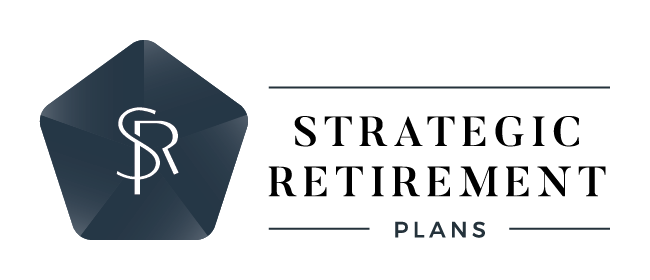Starting fresh is always a great feeling, but the scale of what we set out to accomplish at the beginning of the year sometimes becomes overwhelming as the months go by. The question is, how can you stay motivated to meet your financial goals throughout the year?
Financial Tips for Every Month
For many people, checking off items on a long list of to-dos brings a great sense of satisfaction. To help you keep moving toward your goals, we’ve created a month-by-month checklist of some key financial tasks to consider all year long. You might even find that you’ve completed some of these items already!
January
- Establish a will or trust with an estate attorney. Although many people avoid thinking about estate planning, getting your affairs in order is one of the greatest gifts you can give your loved ones. If you’ve already established a will or a trust, sit down and review the documents with your attorney and make any necessary changes.
- Create a budget. A monthly plan for spending and saving is an excellent way to help keep your finances in check, whether you’re reevaluating your financial life or just trying to maintain good habits.
- Get ahead on your mortgage. If you can swing it, consider making a full extra payment toward your mortgage principal, which may help shorten the length of your loan.
February
- Review life, home, and auto insurance. It’s a good idea to check your coverage regularly. Have you experienced a major life event in the past year, such as a marriage or birth? Any significant changes in your personal life should prompt you to reevaluate your coverage.
- Revisit beneficiary designations for life insurance and retirement accounts. Do you need to add a new beneficiary or change a designation? Review your accounts to ensure that the correct people are listed.
March
- Check your investment portfolio allocations and current holdings. As your financial advisor, we monitor your investment portfolio and holdings regularly. Nonetheless, you should be aware of where and how your assets are invested.
- Explore loans, grants, and other sources of financial aid. There are many ways to finance college and postgraduate education expenses. If you have a college-bound child, it’s wise to get an early start researching the options available to you. The government-sponsored website https://studentaid.gov is a great place to begin.
April
- Look over your online social security statement. Check your benefits information and earning record, and update any outdated personal information, such as your address or phone number.
May
- Review 401(k), IRA, and SEP plans. No matter your retirement goals, keeping an eye on your balances and making regular contributions are essential. Depending on your circumstances, consider increasing the amount you contribute. (Retirement planning is equally important for self-employed individuals, who can take advantage of many of the same savings vehicles.) We encourage you to meet with us to discuss the investment allocations in your 401(k) or another plan.
June
- Check your credit report. Request your free credit report at www.annualcreditreport.com, and review it carefully for mistakes or suspicious charges, which could be a sign of identity theft.
- Shred old documents. Any financial documents that you no longer need, such as bank and investment statements, should be destroyed to ensure that they don’t fall into the wrong hands.
July
- Research 529 savings plans. Withdrawals from 529 plans are tax-free when used for qualified higher education expenses, making them an excellent way to save for a child’s or grandchild’s schooling.
August
- Review online accounts. Look at the usernames and passwords you currently use for your online accounts. If the passwords are too basic or if you’ve held onto them for too long, consider changing them as a security precaution.
September
- Assess your overall investment goals and strategy. Reevaluate your financial goals at least once a year, especially if you’ve had any major changes or unexpected events in your life. We can discuss your situation and help you adjust your financial plan accordingly.
- Revisit your budget. Look back at the plan you made in January, and decide whether to adjust your budget or stick to your current strategy.
October
- Contact your CPA for year-end tax planning. Before tax season hits, it’s a good idea to speak with a certified accountant about changes in your personal circumstances, expiring tax breaks, and so on.
- Consider charitable giving. Donating to charity at year-end is a popular way to do good while reaping potential tax deductions. Charitable giving may be another item you wish to discuss with your CPA.
November
- Review the balance in your flexible spending account (FSA). FSAs require special attention so that you don’t lose unused funds at year-end. Under a new law, in 2023, employers may allow employees to roll over $610 in FSA funds to the next year. Be sure to check the rules of your FSA plan and review your available balance.
December
- Consider refinancing high-interest debt. Consolidating your mortgage, credit card, or car loan payments can make your financial life more efficient (and possibly lower your overall interest rate).
- Pay off credit card balances every month. For the New Year, make a resolution to pay off your credit card balances every month, if you’re not doing so already.
Milestone Events
In addition to the monthly tasks outlined here, keep these significant planning milestones in mind as you near retirement age:
- Age 50: Consider making catch-up contributions to IRAs and qualified retirement plans.
- Age 55: You can take distributions from 401(k) plans without penalty if you’ve retired.
- Age 591⁄2: You can take distributions from IRAs without penalty.
- Ages 62–70: You can apply for social security benefits.
- Age 65: You become eligible for Medicare.
- Age 73: You must begin taking required minimum distributions from IRAs, 401(k)s, and 403(b)s.
Although this may seem like a lot of information to take in at once, glancing at the checklist each month and preparing for important retirement-related dates can greatly improve your sense of financial security, granting you confidence throughout this year—and beyond.
The fees, expenses, and features of 529 plans can vary from state to state. 529 plans involve investment risk, including the possible loss of funds. There is no guarantee that an education-funding goal will be met. In order to be federally tax-free, earnings must be used to pay for qualified education expenses. The earnings portion of a nonqualified withdrawal will be subject to ordinary income tax at the recipient’s marginal rate and subject to a 10 percent penalty. By investing in a plan outside your state of residence, you may lost any state tax benefits. 529 plans are subject to enrollment, maintenance, and administration/management fees and expenses.
This material has been provided for general informational purposes only and does not constitute either tax or legal advice. Although we go to great lengths to make sure our information is accurate and useful, we recommend you consult a tax preparer, professional tax advisor, or lawyer.


